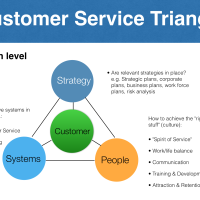What I Look For In A Leader (And What You Should Look For Too) – 4 Key Pillars
When leading people through the murky and turbulent seas of life in its different forms, there are four components I look for in leaders…

The lighthouse graphic shows the four key elements you need to weigh up when steering your team to greater success. Of course, these elements are just as applicable when trying to find or even help a leader. A simple explanation regarding what I mean by Core, Qualities, Mindset and Persona (CQMP) is provided for you below. Please read on…
Core
The core of a leader is important. Without a core, a leader has no sense of purpose. These are their values, the underlying drivers. For instance, when trying to understand the values they have, ask yourself whether they are ethical or unethical.
Ethics is the process of questioning, discovering and defending our values, principles and purpose. It’s about finding out who we are and staying true to that in the face of temptations, challenges and uncertainty. It’s not always fun and it’s hardly ever easy, but if we commit to it, we set ourselves up to make decisions we can stand by, building a life that’s truly our own and a future we want to be a part of.
The Ethics Centre: https://ethics.org.au
Like ethics, much is made of whether morality is also important or not when it comes to how we foster and make critical decisions. In my view being moral is the cornerstone of trust, and it needs to be taken into account when a leader is found wanting in this regard. Key moral traits are: honesty, compassion, fairness, and generosity. Of course there are many others, but these seem to be the ones that we value most (see Anna Hartley – The Importance of Being Moral – Psychology Today).
Qualities
A leader often has distinct qualities. A key question to ask is whether they value people or not. In hand with this question, ask yourself whether they are insipid or not? To be insipid is to lack in the qualities that interest, stimulate, or challenge those around them. This is still the number one reason why people in organisations become disengaged and end up leaving (See the Resource Tip below).
Leaders who do not value people still tend to get away with such behaviour. However, when the chips are down, they will be left with nobody around them. Friends of ours recently commented regarding the work they were doing. At the start of summer they were part of a large team operating a state of the art facility. However, in the lead up to Christmas, their task was completed and were relocated to a smaller unit. Unfortunately, it lacked the sophistication and safe practices of the larger facility. In hand with this, they encountered a site manger who constantly undermined the efforts of all on site. Further, what he thought was an inspiring speech was taken the wrong way and every team member put up their hand to be let go!
Resource Tip!!!
See the article by Mary K Pratt and Sharon Florentine: 9 reasons good employees leave — and how to prevent it
Mindset
When determining the effectiveness of a leader, their mindset is important. The question to ask is whether they are strategic, or action orientated, open (broad) minded or closed minded. Perhaps they are a combination of these factors.
Obviously, a close minded leader will operate in a very narrow niche of endeavour and may very well be successful as a result. However, they will struggle if required to look outside their niche.
Joe Myler and Leah Clark from GP Strategies discuss how a leader can change and develop an effective mindset. They explore what it means to have a growth mindset (people can learn, grow, and expand their skills) an inclusive mindset (gathering other perspectives and new ideas), an agile mindset (openness and adaptability) and an enterprise mindset (decisions based on the greater good).
Myler and Clark point out though that mindset shifts can only be successful for leaders if the culture is supportive.
Their article can be found here: Shifting Your Mindset – The Four Leadership Attitudes to Adopt Right Away
Persona
A good leader doesn’t have to be all smiles, but it helps. Empathy is an important ingredient and much has been made of emotional intelligence (Daniel Goleman) and leading from the heart (Mark C Crowley).
What matters most to people is how they are made to feel by the organizations that employ them, and by the bosses who manage them. So, demonstrate to your employees that they’re authentically valued. Provide them with opportunities to grow and to contribute at a higher level. Appreciate their work. Make people feel they matter. Do all these things and more–knowing it’s rarely an appeal to our minds that inspires any of our greatest achievements.
Why You Need To Lead With Your Heart: Mark C Crowley in Fast Company
Food for thought:
The Korean Drama The Silent Sea on Netflix explores each of the above criteria and shows how leadership at the highest levels has failed all around them. However, the heroes of this tale have a different idea on what is needed to get the job done…














































You piqued my interest about “Silent Sea”. Now I want to watch it even if I don’t have time for it. LOL.
LikeLiked by 1 person
The “Silent Sea” isn’t for everyone, but it is a well put together sci-fi drama set in the near future that teases out those biting social issues in South Korea, including the divide between the haves and the have nots, imperfections and corrupt leadership.
LikeLike
Happy New Year and All Your Wishes and Resolutions will come true.
LikeLiked by 1 person
A very Happy New Year to you, Haoyan. It is going to be aother interesting year and it won’t play out like everyone thinks (or will it?)
LikeLike
Great post on the 4 key pillars. Strong leadership is a key quality of business leaders. A startup I worked with was led by a CEO with poor leadership qualities. His business failed to thrive and eventually the team fell apart as well.
LikeLiked by 2 people
Thank you for your very supportive comments, Vanya 😊 Leaders do need to try and understand themselves as well as others. Working on one’s weaknesses is never easy, but you have to do to keep moving forward!
LikeLiked by 1 person
4 pillars are really very important. I haven’t seen Silent Sea, but will watch now. Happy new year to you, Sean!
LikeLiked by 1 person
I hope you enjoy your watch, KK. I can’t promise you will like it, but like many Korean dramas, I found it a very commentary on people. I hope your New Year is going well so far 😊😊😊
LikeLiked by 1 person
Thank you, Sean for giving this feedback. New year is okay, except Covid. Third wave is round the corner with number increasing daily.
LikeLiked by 1 person
When I look for a leader, I just try to see who is ahead of me without the cops in pursuit! 😂
(just teasin’ of course!)
LikeLiked by 2 people
Lol, CA 😂😂😂 I hope all is well with you and that oven of yours is working overtime 😊
LikeLiked by 1 person
Not overtime, but I DID just bake a pumpkin-banana-nut bread that turned out REEEALLY delicious. May get it into the blog next week or so. 😉
LikeLiked by 1 person
“Interest, stimulate & challenge” – Sean, you have touched a chord (Major at that) with me 👌
Why would I follow a leader who doesn’t engage with me and I mean in multiple intelligences as well as the cerebral realm.
Insipid leadership abounds in the public service and I call out it’s manifestation in Group Think. I shudder every time a colleague commences a diatribe with “The problem with X-Y-Z is …”
So, let’s take a look at some of those key qualities and work on them in 2022, ‘cos as Albert E himself beseeched us, different perspectives and innovative actions beget positive outcomes 😎
Thanks again, SurePaw, for brightening my day during Hamuary 😉
PS How is it possible that Back-to-back Tests seem so far apart???!!##!
LikeLiked by 1 person
I happened to tune in for part of the Sydney Test, Stevo and I found myself lamenting for the days of the great commentators. I remember, how all those years ago you and I used to talk about the great Alan McGilvary and Spud and the like as much as what was happening re the game.
Yes, Group Think has so much to answer for. My Group Think post is coming, I keep changing the order of things. Yes, 2022 is going to be even more of a testing year and the leader within us all needs to be dusted off and polished as you say. We can’t keep looking at things through the same lens!
Talk to you soon 😎
LikeLike
I definitely agree with all of these especially what you said about core because a leader needs to be someone you fully trust and you can’t do that with someone you feel is unethical.
LikeLiked by 1 person
Thank you for your insightful comments and for dropping by the blog, Pooja. Ethics is more important than ever now, especially with what lies ahead. Without building trust, we go nowhere.
LikeLike
Reblogged this on The Wild Coach and commented:
concise and actionable
LikeLiked by 1 person
Thank you so much for the reblog, Wild Coach – you are awesome 😎
LikeLike